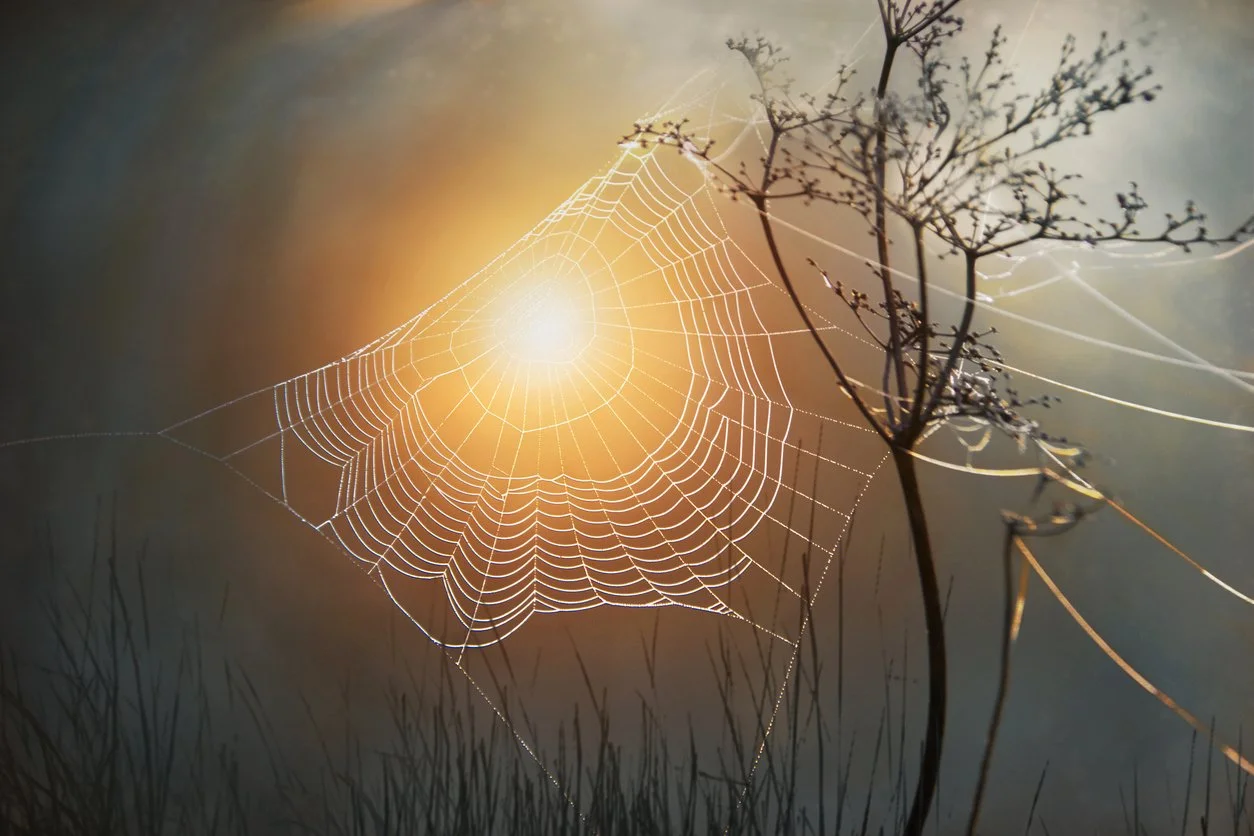Spiderwebs: A Future Tool for Crime Scene Forensics
Introduction
Spiderwebs are not only useful for catching insects, but also for collecting DNA from the surrounding environment. A recent study showed that spiderwebs can reveal the genetic signature of animals, including endangered species. This finding opens up new possibilities for using spiderwebs as a source of environmental DNA for wildlife monitoring and conservation. The concept of using spiderwebs to track biodiversity is fascinating. But what’s more fascinating is the possibility that someday scientists will figure out how they can capture eDNA from spiderwebs at crime scenes that leads to the apprehension of violent offenders.
In this article, we will explore how, in the future, spiderwebs may be used to identify the DNA of suspects at a crime scenes and what the implications are of this novel technique.
What is Environmental DNA?
Environmental DNA, or eDNA, is the genetic material like skin cells, hair, saliva, blood, feces, or urine that organisms and animals leave behind in various environments. eDNA can be extracted from various sources, such as soil, water, air, or plants. All organisms, including microbes, animals, and humans leave behind traces of genetic material in the environment as they pass through habitats or interact with other organisms. By using advanced molecular techniques, eDNA can be collected and analyzed from both aquatic and terrestrial environments, providing valuable insights into the organisms that have been present in a given area.
Spiderwebs, eDNA and Environmental Studies
Worldwide, scientists are studying habitat loss and climate change that are causing a decline in Earth’s biodiversity. Accurate animal monitoring in these studies can be difficult, time-consuming and costly. In new research published in the journal iScience, researchers present evidence for a new method that can be used to monitor animals: spiderwebs. Australian researchers have extracted eDNA from spiderwebs to monitor ecosystems and track endangered species. By analyzing spiderwebs from specific locations, such as the Perth Zoo and the Karakamia woodland sanctuary, scientists were able to identify the DNA of a wide range of animals. They found the genetic signatures of 93 different animals, including both native species like kangaroos and koalas, and animals from other continents like elephants and zebras, which are likely part of zoo collections.
This approach offers a non-invasive and cost-effective alternative to traditional animal monitoring techniques, which often involve direct observation or capturing animals. It's especially beneficial for studying rare and elusive species without disturbing them. The technique also eliminates the need for complex equipment, as spiderwebs are readily available in many environments and easy to collect. Overall, the use of spiderwebs for eDNA collection is a promising development in conservation biology, potentially revolutionizing how we track and protect biodiversity. It's a testament to the innovative ways in which scientists are leveraging nature's own mechanisms to further our understanding of the environment.
How spiderwebs collect eDNA
Spiderwebs promise to be a significant source of eDNA, as they trap not only prey, but also other airborne or surface-bound particles that contain eDNA. They can act as natural environmental eDNA collectors, trapping genetic material from various species that come into contact with them or even floating in the air. This eDNA can include skin cells, hair, or bodily fluids left behind by animals, providing a snapshot of the local fauna.
Spiderwebs are effective at collecting eDNA because they are made of silk, a protein that has a strong affinity for DNA and can preserve it for long periods of time. They are everywhere – even crime scenes. They’re potentially invaluable to scientists because they are found in diverse habitats, making them ideal for capturing eDNA from a wide range of animals.
How spiderwebs can be used for crime scene forensics
Spiderwebs can be used for crime scene forensics in a similar way as they are used for wildlife monitoring. By collecting and analyzing spiderwebs from a crime scene, forensic scientists can potentially identify the DNA of suspects, victims, or witnesses that were present at the scene. For example, spiderwebs can capture the DNA of a suspect who touched a spiderweb or breathed or sneezed near a web. Spiderwebs can also capture the DNA of a victim who was killed or injured by a suspect, or a witness who saw or heard something relevant to the crime. Theoretically, spiderwebs can provide valuable evidence that can link a person to a crime scene or exclude a person from suspicion.
Advantages and challenges of using spiderwebs for crime scene forensics
Using spiderwebs for crime scene forensics has several advantages over other sources of eDNA. Spiderwebs are easy to collect, non-invasive, and do not require special equipment or skills. Spiderwebs can also sample a large area and over a long-time span, increasing the chances of capturing relevant DNA. Spiderwebs can also provide information about the spatial and temporal distribution of DNA, which can help reconstruct the sequence of events at a crime scene.
However, using spiderwebs for crime scene forensics also poses some challenges. Spiderwebs can be contaminated by DNA from other sources, such as wind, rain, or animals. Spiderwebs can also degrade over time, reducing the quality and quantity of DNA. Spiderwebs can also be affected by the behavior and ecology of spiders, such as web building, web maintenance, web consumption, or web abandonment. Spiderwebs can also be influenced by the environmental conditions, such as temperature, humidity, or sunlight. All these factors can affect the reliability and accuracy of spiderweb eDNA analysis. And of course, like any new forensic methodology, collecting eDNA from spiderwebs to further criminal investigations and prosecutions will have to survive judicial challenges prior to acceptance by courts.
Conclusion
Spiderwebs are a promising new tool for crime scene forensics, as they can collect and preserve eDNA from a variety of organisms that were present at a crime scene – including potential suspects. Spiderwebs can provide valuable evidence that can help identify or exclude suspects, victims, or witnesses. However, spiderwebs also have some limitations and challenges that need to be addressed before they can be widely used for forensic purposes. Further research and development are needed to optimize the methods and protocols for spiderweb eDNA collection, extraction, and analysis, and to validate their applicability and accuracy for different types of crimes and scenarios.
The use of spiderweb DNA collection is a testament to the power of science to help us solve some of the most difficult problems facing the police today. When investigative and forensic communities displace concepts from another discipline – like wildlife biology – to their domains, new learning, new scientific methodologies, and increased solutions to crimes are possible. Hopefully, one of the first things crime scene investigators will soon search for are spiderwebs containing eDNA of criminal suspects. In this way, the police will solve more “who done it?” crimes of violence and enhance the public’s trust and confidence in their ability to serve and protect them.
About the author: Chief Jim Bueermann (ret.) is the Founder and President of the Future Policing Institute. He spent 33 years witih the Redlands Police Department (CA) and is the former president of the Washington, DC based National Police Foundation (now the National Policing Institute).


